#filipina in america
Explore tagged Tumblr posts
Text
youtube
#Filipino#Filipino-American Family#Fil-Am#Game time#Playing with my kids#Fun#Larong Pilipino#Filipino Games#filipina#es mcguire vlog#family#filipina in america#filipina vlogger#Youtube
0 notes
Text
Filipino American speaks up regards proper legal immigration
youtube
#Filipino#Filipino american#American#America#Legal immigrant#Legal immigration#College#College student#Filipina#Filipino community#Filipino americans#Charlie kirk#MAGA#Make America great again#Filipinos#Pilipinos#Migration#Trump#President Trump#Youtube
13 notes
·
View notes
Text
I need something lighthearted and just to see what the general reaction is:

If you hate it, scroll past. If you think my crackship has potential though, let me know. I wanna hear what people think of this.
#marvel#marvel comics#captain america#steve rogers#captain steve rogers#wave#marvel wave#pearl pangan#agents of atlas#filipino#filipina#captain america x wave#steve rogers x pearl pangan#polls#rarepair#crackship#What would their ship name even be?#CapWave?#Stearl?#Lemme hear your thoughts on ship names#ships#fandom ships#shipping#ship dynamics
6 notes
·
View notes
Text
hi everyone!
good evening across the globe & maayong buntag pilipinas!
i hope everyone’s monday and tuesday has been going well! it’s wednesday now for me, so halfway to the weekend. it’s been a super eventful month so far and i’m so excited for school to finally be over and go back home to america for vacation. what are you guys doing this summer?
i also wanted to discreetly plug in my latest tiktok vlogs if you could please support! it would mean the world to me. honestly, even though i haven’t been getting much traction on tiktok, it’s still been really fun to film my life and just edit my videos. i feel like teddy from good luck charlie. here they are attached w links below! thank you guys so much.
yours,
miss jia
a day in my life in cebu — https://www.tiktok.com/t/ZTjDXqdFh/
tuesday grwm — https://www.tiktok.com/t/ZTjDXPFYS/
p.s. here’s my profile QR & the song reco of the day!

#filipina#girl blogger#beauty#girlhood#aesthetic#hell is a teenage girl#nursing#cutesy#philippines#spotify#america#americana#canada#canadian#tiktok#tiktoker#influencer#blogging#blog post#update#vlogger#vlog#vlogging#grwm#im just a girl#girl boss fr#SoundCloud
6 notes
·
View notes
Text
Human Trafficking done by Filipina demons criminals. Lisa Kathleen Princess Santos Mercado, Mila Yalung Mercado of Mandaluyong Philippines.
April 30, 2025. Irvine, California. United States of America
🟨 Lisa "Incez" Santos Mercado | Mila Yalung Mercado Demons The first person to curse Gerard and his younger sister, Cheryl was their paternal 1st cousin, Lisa Kathleen "Princess" or "Incez...." Santos Mercado, she cursed both Gerard and his sister 1996-1997, the last time Gerard saw her before they moved to America.
Lisa "Incez" and Gerard used to fight as kids, Lisa "Incez" was the youngest of the Lisa siblings.
She's a demon like Ralph Mercado, and like Ralph, she is also the demons of Gerard and his siblings, especially Cheryl - her life choices and friends are from her demons - Incez, Mila, Levita and others (Single mom, one kid).
Lisas and Mila are also demons of Trishia Mercado. Single mom, with a male kid is Mila (their paternal aunt, and also a Lisa), looks like Mila is replicating her life through her nieces....
🟨 Uncle to Niece Ralph is Lisa, Cheryl and Gerard's paternal uncle, youngest, 70's generation - Lisa Catherine, Lisa Laine "Lani", Hazel Mercado Dizon, and Trishia Mercado are 70's.
Lisa Kathleen "Princess" or "Incez" Santos Mercado is 80's, same generation as Gerard and his younger siblings.
Paternal uncle is the same generation as his older nieces...
Ralph Yalung Mercado and Lisa Kathleen "Incez" Santos Mercado are Uncle to Niece.
Pedro Ferreras Mercado and Mila Yalung Mercado are also Uncle to Niece.
A pair.
#Human Trafficking done by Filipina demons in America#Human Trafficking and selling done by illegal Filipinos in California Colorado#Stealth human Trafficking Lisa Kathleen “Princess” “Incez” Santos Mercado Mandaluyong Philippines#Human Trafficking done by Mila Yalung Mercado Bacolor Pampanga#Human Trafficking done by Zoila Salas Gavilo-Villoria Marikina Philippines#Human Trafficking done by Edsel Francis Alvarez Mercado and Rex Ian Sayson#Human Trafficking done by Merlita Gavilo Samuels of Lakewood Colorado and Martin Samuels of Colorado#Human Trafficking by Levita Biag of San Jose California and her siblings#Filipino cops pretending to be American cops for extortion Ruperto Biag and Bobot Biag#relatives of a Santa Gavilo Biag and Levita Gavilo Biag
2 notes
·
View notes
Text
The Barong Tagalog, a traditional Filipino garment, underwent significant transformations throughout the 20th century, adapting to modern trends while maintaining its cultural roots. This evolution was influenced by historical events, social changes, and the shifting dynamics of Filipino identity. From being a symbol of colonial subjugation to a marker of national pride, the Barong Tagalog adapted in response to both local and global fashion trends, making it relevant in the modern age.
Here’s how the Barong Tagalog evolved and adapted to modern trends in the 20th century:

1. Colonial Influence and Early 20th Century: Reinterpretation Post-Revolution
At the turn of the 20th century, after the Philippine Revolution (1896–1898) and the country’s shift from Spanish rule to American colonization, the Barong Tagalog began to gain prominence as a symbol of Filipino resistance and national identity. The garment, which had once been associated with colonial subjugation, became a powerful emblem of Filipino pride and cultural assertion.
Early 1900s (Post-Revolutionary Period):
Return to Tradition: Following the revolution, the Barong Tagalog was reinterpreted by Filipino elites as a garment that expressed nationalism. It was no longer worn solely by the lower classes or as a sign of colonial oppression but became a symbol of the growing Filipino elite’s sense of identity and cultural pride.
American Colonial Influence: During the American colonial period (1898-1946), the Barong Tagalog experienced Western influence. While the American administration encouraged Western-style suits and uniforms, the Barong Tagalog remained important for formal occasions. It was worn by politicians, diplomats, and businessmen in place of the Western suit, creating a distinct Filipino sartorial identity.
2. The Mid-20th Century: The Rise of Piña and Embroidery
The mid-20th century was marked by refinement in the Barong Tagalog’s materials and design, which aligned with broader trends in global fashion. As the Philippines gained independence in 1946, the Barong Tagalog continued to adapt, becoming a more formal and prestigious garment.
1940s–1950s:
Fabric Refinement: Piña (pineapple fiber), long valued for its lightness, texture, and elegance, became the most iconic fabric used for the Barong Tagalog. The intricate hand-embroidery also began to reach new heights in terms of artistry, with Filipino artisans adding detailed, intricate patterns, often reflecting regional styles. These features made the Barong more suited for high-end formal occasions, such as weddings, state functions, and official engagements.
Celebrity and Political Influence: Political figures, such as Manuel Roxas (the first President of the independent Third Republic of the Philippines) and Ferdinand Marcos, wore Barong Tagalog during official events. The Barong Tagalog became the de facto formal wear for Filipino men in positions of power, cementing its place in the national consciousness.
Filipino Men’s Fashion: The Barong Tagalog gradually evolved from a plain, functional garment into something more fashionable and stylish. By the mid-20th century, it was designed with more embellishments like lace trim, delicate embroidered motifs, and sheer, semi-transparent fabrics. These changes reflected the globalized fashion scene, which was growing increasingly focused on detailed craftsmanship and unique designs.
3. 1960s–1970s: Globalization and Cultural Resurgence
In the 1960s and 1970s, the global fashion world became more aware of traditional garments from various cultures, and the Barong Tagalog, as an important symbol of Filipino heritage, started to gain international recognition.
1960s–1970s:
Cultural Nationalism: The rise of cultural nationalism in the Philippines in the 1960s, spurred by figures like Carlos “Botong” Francisco (a prominent Filipino artist) and Nicolás Zafra (a cultural historian), brought the Barong Tagalog back into the public eye as an expression of Filipino identity. This era was marked by efforts to promote Filipino culture through arts, architecture, and fashion. The Barong became a popular garment for formal gatherings, especially after President Ferdinand Marcos issued an executive order in 1975 urging Filipino men to wear the Barong Tagalog on national holidays like Independence Day.
The Barong in International Fashion: As part of the globalization of fashion, the Barong Tagalog began to make its way into international events. The 1960s and 1970s saw Filipino diplomats and leaders sporting the Barong Tagalog at international conferences, state dinners, and even at UN summits, where foreign dignitaries were encouraged to wear the garment. The World Expo in 1964 in New York, where the Philippines was prominently featured, marked an important moment for the Barong Tagalog in the global spotlight.
Changing Fabric and Style: While piña remained the most prestigious fabric, there was also a move towards using other fabrics such as cotton, organza, and rayon. These fabrics made the Barong Tagalog more affordable and accessible to a wider range of Filipinos while still maintaining its traditional elegance. The designs became simpler, though still retaining elements of embroidery, making the Barong more wearable for casual and semi-formal events.
4. 1980s–1990s: The Barong as a Fashion Statement
By the 1980s and 1990s, the Barong Tagalog had fully entered the global fashion mainstream, adapting to the ready-to-wear movement while retaining its identity as a garment for special occasions. The emergence of fashion designers who embraced Filipino craftsmanship also played a key role in modernizing the Barong Tagalog.
1980s–1990s:
Crossover into Fashion: In the late 20th century, Filipino designers such as Rajo Laurel, Cathy Valencia, and Inno Sotto played a crucial role in modernizing the Barong Tagalog. They experimented with fabric choices, introducing organza, silk, and modern synthetics while preserving the garment’s defining sheer, embroidered look. These modern adaptations allowed the Barong Tagalog to remain a fashionable option for contemporary men’s wear while being rooted in tradition.
Global Recognition and Celebrity Endorsement: International figures, including Hollywood celebrities and foreign diplomats, began to wear the Barong Tagalog at formal events. For example, Imelda Marcos, former First Lady of the Philippines, famously wore the Barong Tagalog during high-profile events, and Filipino-American celebrities such as Lou Diamond Phillips began donning the Barong as a celebration of their cultural heritage. This helped elevate the garment’s status on a global scale.
Filipino-American Influence: The growing Filipino diaspora in the United States also contributed to the Barong Tagalog’s adaptation in the 1980s and 1990s. Filipino-Americans began to wear the Barong at weddings, family reunions, and cultural festivals, where it became a fashion statement blending both traditional and contemporary aesthetics.
5. Late 20th Century to Early 21st Century: The Barong Tagalog as a Formal Staple
As the 21st century dawned, the Barong Tagalog evolved further into a formal yet versatile garment. The garment’s continued popularity and its ability to adapt to modern trends ensured that it remained relevant in Filipino society, even as global fashion trends continued to shift.
1990s–2000s:
Barong in Weddings and Formal Functions: The Barong Tagalog became a popular choice for weddings, particularly in Filipino-American communities. Its light fabric and elegant appearance made it an ideal garment for tropical weddings and formal functions in the Philippines, and it became a mainstay in Filipino society for occasions such as national holidays and state dinners.
Global Fashion Recognition: The Barong Tagalog’s integration into the global fashion lexicon continued as international fashion weeks, like those in New York and Paris, saw designers incorporating Filipino elements into their collections. This led to a growing international appreciation for the Barong Tagalog, both as an ethnic garment and as a timeless fashion piece that combines history, art, and modern sophistication.
The Barong Tagalog’s Enduring Appeal
The Barong Tagalog has successfully adapted to modern trends while preserving its cultural significance. From its post-colonial re-emergence as a symbol of Filipino pride to its modern-day adaptation as a staple of formal Filipino fashion, the Barong Tagalog has remained a symbol of the country’s rich heritage and evolving identity.

Through continuous modernization, including fabric innovation, embroidery techniques, and cultural reinterpretations, the Barong Tagalog has become both a formal garment and an international fashion statement, cementing its place in the global fashion scene. Whether worn during state occasions, cultural festivals, or weddings, the Barong Tagalog is a lasting testament to the resilience, craftsmanship, and beauty of Filipino culture.
#barongtagalog#philippines#barongs#philippine culture#custommadebarongtagalog#filipinopride#madeinthephilippines#filipinoculture#filipinowedding#pinoy#FilipinoWeddingDress#Custommadebarongtagalog#filipinoproduct#kimonadress#filipinoamericans#America#trump#united states of america#politics#fastion#fashion#filipinofashion#filipinostyle#filipino#filipina
1 note
·
View note
Text

This is the Nainital area of our Uttarakhand which looks beautiful than heaven. Seeing this area gives great peace to the mind.
#science#nainital#uttrakhand#canada#japan#america#france#green#israel#filipina#dubai#tehran#comics#parenting#photography#quotes#nature#museums#nonprofit
0 notes
Text
The Spanish surnames of many Filipinos have often misled foreigners here and abroad, who are unaware of the decree on the adoption of surnames issued by Governor-General Narciso Clavería in 1849. Until quite recently in the United States, the Filipinos were classified in demographic statistics as a “Spanish-speaking minority,” along with Puerto Ricans, Cubans, Mexicans, and other nationals of the Central or South American republics. The Philippines, as is well known, was a Spanish colony when Spain was mistress of empires in the Western Hemisphere; but the Americans were “hispanized” demographically, culturally, and linguistically, in a way the Philippines never was. Yet the Spanish surnames of the Filipinos today—García, Gómez, Gutiérrez, Fernández—seem to confirm the impression of the American statistician, as well as of the American tourist, that the Philippines is just another Mexico in Asia. Nor is this misunderstanding confined to the United States; most Spaniards still tend to think of “las Islas Filipinas” as a country united to them through the language of Cervantes, and they catalogue Philippine studies under “Hispano-America.” The fact is that after nearly three-and-a-half centuries of Spanish rule probably not more than one Filipino in ten spoke Spanish, and today scarcely one in fifty does. Still the illusion lives on, thanks in large part to these surnames, which apparently reflect descent from ancient Peninsular forbears, but in reality often date back no farther than this decree of 1849.
Somehow overlooked, this decree, with the Catálogo Alfabético de Apellidos which accompanied it, accounts for another curiousity which often intrigues both Filipinos and foreign visitors alike, namely, that there are towns in which all the surnames of the people begin with the same letter. This is easily verifiable today in many parts of the country. For example, in the Bikol region, the entire alphabet is laid out like a garland over the provinces of Albay, Sorsogon, and Catanduanes which in 1849 belonged to the single jurisdiction of Albay. Beginning with A at the provincial capital, the letters B and C mark the towns along the coast beyond Tabaco to Tiwi. We return and trace along the coast of Sorsogon the letters E to L; then starting down the Iraya Valley at Daraga with M, we stop with S to Polangui and Libon, and finish the alphabet with a quick tour around the island of Catan-duanes. Today’s lists of municipal officials, memorials to local heroes, even business or telephone directories, also show that towns where family names begin with a single letter are not uncommon. In as, for example, the letter R is so prevalent that besides the Roas, Reburianos, Rebajantes, etc., some claim with tongue in cheek that the town also produced Romuáldez, Rizal, and Roosevelt!
Excerpt from the 1973 introduction to Catálogo de Alfabético de Apellidos by Domingo Abella
1K notes
·
View notes
Text
MIKU INDEX
List I | List II | List III | Polish List
800+ mikus and counting ↑ in those four links above
French Bretonne Miku
French Auvergne Miku
French Alsace Miku
Spain Galicia Miku
Italian Miku
Belgian Miku
Finnish Miku
Finnish Miku
Swedish Miku
Norwegian Miku
Austrian Miku
Serbian Miku
Serbian Miku
Albanian Miku
Bułgarian Miku
Bułgarian Miku
Romanian Miku
Romanian Miku
Belarusian Miku
Belarusian Miku
Ukrainian Beer Miku
Ukrainian Miku
Grand Duchy of Lithuania Miku
Lithuanian Miku
Lithuanian Miku
Lithuanian Miku
Polish Miku
Polish Miku
Polish Łowicz Miku
Polish Biedronka Miku
Slovak Miku
Slovak Miku
San Marino Guard Miku
Pennsylvania Dutch Miku
Acadian Miku
Colombian Cundinamarca Miku
Chilean Miku
Venezuelan Miku
Surinamese Miku
Guyanese Miku
Guatemalan Miku
Puerto Rican Miku
Grenadian Miku
Trinidadian Miku
Antigua and Barbuda Miku
Dominica Miku
Barbados Miku
Muscogee Miku
Alaskan Yupik Miku
Aleut Miku
Nigerian Miku
Cameroonian Miku the real trendsetter
Cameroonian Miku
Liberian Miku
Liberian Miku
Egyptian Miku
Tunisian Miku
Mauritanian Miku
Congo (Brazzaville) Miku
Sierra Leonean Miku
Reunión Miku
Kikuyu Kenyan Miku
Kenyan Kamba Miku
Rwanda Miku
Ugandan Miku
Seychellois Miku
Bangladeshi Miku
Nepali Miku
Thai Miku
Khmer Miku
Vietnamese Miku
Samoan Miku
Samoan Miku
Tongan Miku
Australian Miku
Filipina Miku
Filipina Miku
Filipina Palay Maiden Miku
Taiwanese Miku
Ming Dynasty Chinese Miku
Qing Dynasty Chinese Miku
Chinese Miku with other Mikus from around the world
Korean Miku
Kazakh Miku
Don Kazakh Miku
Ingush Miku
Mari Miku
Armenian Miku
Syrian Miku
Syrian Miku
Israeli Miku
Jewish Miku
Jordanian Miku
Turkish Miku
Azeri Miku
I have yet to see any for
In Africa
Botswana, Burkina Faso, Burundi, Central African Republic, Equatorial Guinea, Eritrea Eswatini, Guinea, Guinea Bissau, Lesotho, Malawi, Mali, Niger, Sao Tome, Tanzania,
In North America
Antigua and Barbuda, Dominica, St. Lucia, St Vincent and the Grenadines,
In Asia
Maldives, East Timor,
In Oceania
Kiribati, Marshall Islands, Micronesia, Nauru, Palau, Solomon Islands, Vanuatu,
If I am missing your miku let me know or if you have found a country I have listed that I couldn't find
216 notes
·
View notes
Text

i saw you in a dream a two-part Karasu Tabito x Filipina!reader story part two
Synopsis: The dreams of a distant war led you to believe that he could exist now. Maybe he did.
Word Count: 2.3K
Content Warning: Discussions of history (especially with how Japan teaches it), reincarnation au, reoccurring dreams, fluff, a little ooc (sighs again i know), mentions of Karasu's childhood experiences (lmao huhu)
Author's Note: Now, I know that the discussions of Japan's way of teaching their people about the history of WW II are quite different from how the rest of the world tells it and how it's still controversial, I dabbled lightly around this sensitive topic just to give an insight of how the reader and the other characters dealt with it. I just wanna give you a heads-up on that. If you have any insights about it, please let's discuss it together through replies, reblogs, dms, or asks. I want everyone who reads this part to have an open mind and be willing to give out their points in terms of writing and history. Thank you so much for reading the first part.
Read part one here!
@mininji @wannabepoeticischiya @x3nafix ✨

You were 8 years old.
The dream was always blurry like a camera lens that needed some wiping. The voices sounded underwater; only its tone was familiar to you. The song from the record player was oddly clear to you, but you never figured out what the song was. You can feel the grief in it... because, in the dream, you were the woman left behind by... what was his name again?
At a young age, you'd always read the story of the Japanese Occupation in the Philippines in your History Book almost every week, memorizing the events. However, to your knowledge, you know that there's something more than just the important date of when the Bataan Death March started and where the destination was or what McArthur said when he fled the Philippines for safety.
You asked your teacher to tell you more when the class reached the lesson, being the only one awake and active in such a boring class. She was more than willing to tell you more after classes for a one-on-one session, further increasing your excitement. She warned you as you sat comfortably beside her desk that the deeper event of the colonization wasn't for children, to which you only responded, "I'm a big girl, teacher! I'm sure I can handle it."
You did not.
Because who even knew that there were abuses against women, forcing them to bring men comfort? Who even knew that the Philippines suffered the most because of the battles between Japan and America? Who knew the country was almost erased from the map because of the war? Who knew that it was a bloody part of the country's history?
You struggled to sleep that night, and the dream didn't help you much.
By age 12, your parents took you to Japan as they worked there. It was better for everyone to be together; they told you to comfort you as you cried and cried not to let you leave your grandparents' house. They promised a complete family if you just go with them this time. The plane ride in a foreign country, the country that did so much damage to your homeland, made you feel nauseous. You didn't want to be with these people, you thought, as you sat in your seat, unable to understand anyone in class. It was a sad sight. You were thankful that your dad was patient enough to teach you basic phrases and Hiragana. "You'll get better when you make friends. That way, you can talk and learn from them," he told you one night after your nightly tutoring session.
Easier said than done. Until someone did approach you.
He was nice, at least. He didn't care much that you were different and quiet. He sat beside you one day and said, "Otoya." You replied with your last name, and he nodded. Then he started to talk. You tried to understand what he said, and he was patient enough to let you process what he said before saying more. He was so chill around you that you brought him home to introduce him to your parents, saying, "Ma, Pa, Otoya," then turning to Otoya, saying, "Otoya, Ma, Pa."
It was a weird sight that your parents talked to him more than you did to him, your parents translating what they just said in your native tongue. Slowly, he became a frequent visitor in your home, being around whenever your father gave you your daily language lessons. When you started to get the hang of the language, you finally had a proper conversation with him without writing your questions and responses on paper. There would be times that Otoya would correct you, and you'd roll your eyes at him at which he'd just shrug.
You told him about the dream, how it's connected to history, and how your country suffered. You and Otoya had a silent argument about what version of history was right, almost causing both of you to almost break off your friendship.
You decided to say sorry and to just drop the history thing. But Otoya was still intrigued by your dream.
"Might be reincarnation," he said as you two were taking a break from studying, lying on the hardwood floor of your living room. His silvery hair shone from the sunlight streaming through the window. You sighed and started to fidget on the hem of your shirt. "That would be weird. Why would I be a reincarnation of a sad lady?" you asked quietly. Otoya turned to look at you, his slanted eyes looking bored yet interested. "Maybe you'd grow into one," he teased, his tone unchanging. He always spoke nonchalantly, but you always picked up the intention of his words through the little quirks of his voice. You grabbed your notebook and slapped his head with it, earning a little "ow" from him. "And you'd grow up into a miserable old man who will never get a girlfriend."
Otoya laughed softly and shook his head. "You're wrong. I'm already on my sixth girlfriend this year," he said, his laughter fizzled into a small smile on his lips. "Eugh, we're in our second year of middle school and you had 6 girlfriends already? Gross."
"If you aren't so hung up with your dreamscape husband, maybe you'd enjoy dating too," he replied, sitting up. The ends of his silver hair dropped on his forehead, then he fixed the green streak in front. "Are you really gonna grow your hair out?" you asked, ignoring his comment from earlier. Otoya nodded and messed his hair up a little. "I read somewhere that girls are into guys with longer hair. Might wanna try that out."
You let out another gagging noise before you sat back up. "Enough with the dating talk. You disgust me."
You noticed that the dreams were becoming clearer yearly, revealing more events. The conversations were a little audible, the faces of your dreamscape siblings were no longer a blur, and the song... you were finally able to figure out the tune of the song. The moment you woke up one day, you quickly hummed the song through your phone's voice recorder, hoping one day you'd find the title.
By the time you reach the age of 17, you realize you've been having the dream more frequently than before, sometimes five times every couple of months. By now, you know how deep the man's voice was, comforting and warm despite the situation. He was caring, he was kind. You wondered if Otoya's guess years ago of this being a reincarnation was true because now, you only wanted to find someone like the man in your dreams. How much of a coincidence would it be when you find the same person as him?
Five years have passed, and you have slowly forgotten about the dream. Maybe it was just your busy life that made you forget how you had it for the past year. Now, it's just an afterthought, a memory of how you experienced a love story every time you closed your eyes at night.
The classroom door opened, revealing Otoya and the security guard following behind him. "Eita! It's class hours, what are you doing here?" You asked, pushing him out of the room. The kids inside the room gasped and giggled, hushed conversations between them. "You're attracting too much attention now," you scolded him silently. Otoya shrugged and replied, "Come with me this weekend." Typical Otoya, not acknowledging the commotion he's causing. Now kids are lurking by the door, looking at the star footballer and wondering what he's doing with their beloved English teacher. You smiled at them and asked them to get inside, your sweet voice filling the hallways. The kids giggled and hid behind the door. "Eita," you said, returning your focus to your childhood friend, "you could've texted me that you're back in town."
"You could've been busy, and this is easier. I've invited some soccer friends to visit and take them around the city. Plus, they don't believe I have a best friend, so come with me," Otoya replied, his voice a little sing-song tune, but when he sounds like that, he's annoyed. You scoffed, reaching out to tug his green-streaked hair gently. "Alright, I'll accompany you and your friends. Just text me the details so I can clear my schedule, but only on the weekend. Okay?"
As soon as Otoya nodded, you started to push him out of the hallway. "Now you have to leave. The kids might not be able to stop themselves from seeing more of you." Otoya nodded and waved at the kids peeking through the door, watching him leave. The moment you turned to tell the kids to get back inside, they started to bombard you with questions about your relationship with Otoya and how you knew him. You sighed, knowing that the lessons would be put aside for this.
The moment Karasu heard Otoya mention your name in the locker room after their last match, he knew.
The dreams, he knew this is what it meant. He knew that he was going to meet you one day. "Who?" he asked.
"Oh, interested?" Otoya replied, "Too bad 'cause she's in love with someone else."
He must be interesting, Karasu thought, but meeting you might change everything. Maybe. Chigiri chimed in, saying he doesn't believe that Otoya has a best friend when all he talks about are girls and how to pick them up. "How about we visit each other's hometowns while off-season?" Otoya suggested, throwing his duffle bag over his shoulder, and waiting for Karasu and Chigiri to finish up. Chigiri shrugged, saying he was okay with it. Karasu agreed too, saying it would be interesting to look around.
Your name has been on his mind for years, it's crazy. He has never told anyone about his dreams, how he sees himself as a soldier in high ranks, marrying a girl in a country he has studied so much about, learning as much as he could, even the parts he cannot accept at first but kept his mind open for the possibility that it might be true. It was crazy enough that people might start making fun of him for it, so he kept it to himself, kept it in his heart, and swore to find you, even if the possibility of meeting you were low. He believed that in his ordinary life, this dream made it extraordinary.
The dreams started when he was 8. Every night, it’s always so clear. Karasu could see the face of the lady, the way she smiled, the way she cried when he left, the way she looked when he danced with her. The sad lady, he once called her, became his favorite dream. Maybe that's why he rejected Marisa. He was too in love with her.
It was sad when he dreamt of the lady less and less as he aged. He could remember her name, her face, and her voice. Karasu knew that this might have meant something.
He read about reincarnation in other religions and how it works. He read about it in fairytales and watched it in romance movies his sister loved to watch. Karasu knew he could be reaching, but if he kept dreaming of a certain woman, this might be it.
Now it seemed fate was working overtime as he and Chigiri waited for Otoya to pick them up at the station. It was a lovely day, too. The breeze was gentle and cool, and the sky was as blue as ever.
He knew this would be the day he’d meet the sad lady.
"Sup," Otoya greeted as he arrived, walking towards the two. "Where's your best friend?" Chigiri asked, looking around, "You said your 'best friend' would be here."
"She will be here. She has some school things to do," Otoya responded.
"Student?" Chigiri asked.
"Nah, teacher."
The day went on as Otoya took Karasu and Chigiri to local spots to avoid a surge of tourists that day. Otoya was good at playing tour guide for the two, taking pictures of each other, noting places with great deals, and buying souvenirs for their families. It was not long before Otoya took Chigiri and Karasu to Sakae District, awaiting your arrival.
And Karasu knew you before you even spoke.
God, you looked exactly like how you did in his dream. The kind eyes, a smile that could take every worry away, and your hair, though longer, was the same. But you weren’t as sad as you were in his dreams. "Is that her?" Karasu asked, his eyes glued on you as you walked towards them. "Yep."
"Hi, guys! I'm sorry I joined you so late! Had to grade the kids' essay papers," you said, your cheerful voice somehow lifting their exhaustion. Otoya threw his arm over your shoulder, pulling you to him. "It's alright. We had fun without you anyway."
"Rude," you scoffed, nudging his rib with your elbow. "Are you gonna introduce me to your soccer friends, Eita?"
"Ah, right. Karasu, Chigiri, Y/n. Y/n, Karasu, Chigiri."
Your mind somehow sparked at the name. Karasu. Where have you heard that name again?
His eyes met yours, pretty blues that reminded you of something distant. A memory? His smirk reminded you so much of someone you met before. He was familiar yet a stranger, someone you want to know more and get close to. What was this feeling?
You held out your hand for Chigiri, which he was happy to shake, and turned to Karasu who held your hand firmly, and for a split-second...
You were taken back to the conversations in the dream about the war and the soldier telling you he loved you, how he told you he wanted you as his wife, and how his name was...
"Tabito?"
Karasu smiled at you as he stepped closer, meeting your gaze once more.
"So, it really is you, Y/n. I've been waiting to meet you for years."
#lazyyy writes#bllk#blue lock#bllk fanfic#bluelock fanfiction#blue lock drabbles#bllk drabbles#bllk x reader#bllk x you#bllk x y/n#bllk x female reader#blue lock x reader#blue lock x you#blue lock x y/n#blue lock x female reader#bllk karasu#blue lock karasu#bllk karasu tabito#blue lock karasu tabito#karasu tabito#karasu x reader#karasu x you#karasu fluff#filipina reader
68 notes
·
View notes
Text

↳ gusto ko ng maginoo pero may pagkabastos, gusto ko ng barumbado pero may takot sa diyos . . .



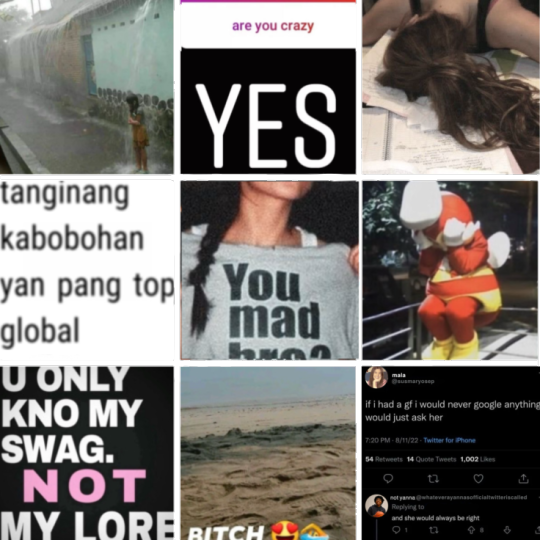
↳ “just, like, trust me— i swear it won’t go bad . . . or, uh, too bad.”

maria (mari-AH, not mari-UH) maluluan. nineteen. filipina. fresh out the plane from the motherland of philippines; luan’s a transfer from dlsu who came over to uconn as a means of getting herself out there—don’t know how she’s going to do that though. she’s… not even out-out yet (as a lesbian). back in dlsu she was a high honors/highest honor student—dean lister STREAK, actually— but lowkey knowing philippines’ curriculum? she never slept. a total overachiever. now she’s just a political science major (sociology minor) with a little too much knowledge on mathematics because of how drilled into her it was while she was but a little baby. the meanest resting bitch face but is actually just awkward and unable to speak without stuttering. she’s bad at tones—both watching hers, and reading others’ own. she’s still getting used to america (her suitcase isn’t fully unpacked yet… don’t even get started on her dorm…) but she’s ready to start off the new semester with a bang! maybe. most of the time. she’s HERE, okay. that’s all that should matter. more info about her in tags, but tl;dr she’s a disaster.


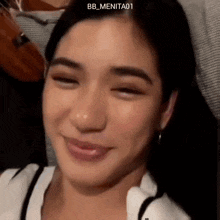

↳ “ my dorm? my dorm has a futon and a pillow with no case on it right now. i have exactly one chair and no table. wait— no, that’s not true. i got a desk. but it’s like… i don’t like it.”

↳ gusto ko ng yakap 'pag paligid ay dumidilim, gusto ko rin ng halik sa noo pati sa leeg !

@likelysobbing. — … guys don’t look at me. this is so vulnerable of me to post
#MIGRAINE ! — mc.#🤍 malaluan#when i say luan’s smart bro i mean shes SMARTTTR.#like as in i need her to have a source of income and that comes from her stipend which is awfully generous bc shes a FUCKING SCHOLAR#the only one of her family to actually go abroad and she has a huge family#she misses them#she basically maxed out all her scholarships so her hardworking brother pays the rest and shes#bery close to him#that is her kuya ty#also shes from specifically pasig LMAOAOA#she transferred in i think what would be the middle of the year#u may be wondering… who’s her love interest?#leaning toward kk#kk arnold#or paige…#kk arnold x reader#BRO MAYBE AZZI OR JUJU#paige bueckers x reader#azzi fudd#juju watkins#idk whoeverr she look good wit. ill probbaly spin a wheel of sum shi#whatever it is the trope will strictly be GODDESS (the athlete) x LESBIAN WHOS INLOVE WITH HER (maria)#luan’s a LOSER she has no life sorry#shes not an athlete shes… shes a mathlete#her court is her mind 😝😝😝#nerd alert nerd alert#her humor is literally like the default filipino humor so like budots and uyy pilippins#but its also a combination of my own (im so fucking funny trust) and josie kays cuz shes hilarious#whoever get her i feel bad shes a LOSER 😭😭😭😭😭😭#it literally wont be the athlete pining over her (loudly) itll be like luan being like pls date me pls date me pls date me
23 notes
·
View notes
Text
A Beautiful Filipina looking up into the heavens

#Filipina#Filipino#Beautiful filipina#Beautiful filipino#Filipino lady#Filipino girl#Filipino woman#Filipina pride#Filipino pride#Cute filipino#Cute filipina#Filipino america#Pilipino american#Nature#Art#Art style#Night#Night sky#Nightsky#Evening#Outdoor#Outdoors#Hike#Hiking#Open field#Starry sky#Starry skies#Explore#Exploring#Filipino community
1 note
·
View note
Text
Porn and Human Trafficking. Maria Abugan. Indian bike. Filipina Demon.


#human sellers#untold crimes#untold murders#united states of america#human trafficking#new light abducted#iggy azalea#cousins#Maria and Pornography#Brisa Jason Frank Martin and Pornography#Ron Jeremy And Filipina Maria Abugan Los Angeles California
0 notes
Text
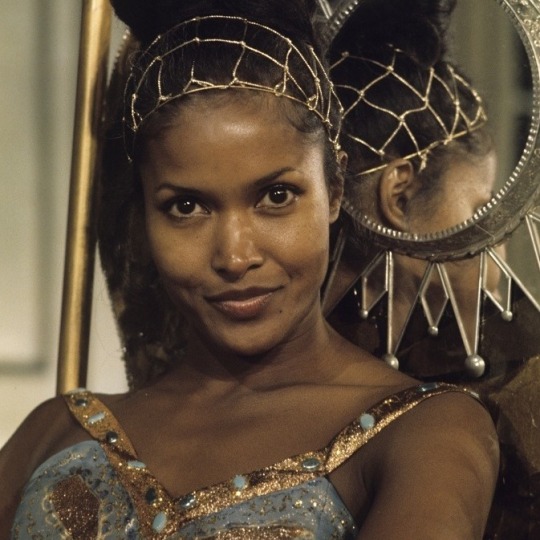

Propaganda
Marpessa Dawn (Black Orpheus)—She's like. fairy tale princess etheral pretty. truly eurydice realness. AND she's a singer AND she's a dancer. she used to be a governess/nightclub dancer, which isn't hot per say i just thought it was an interesting job combination. If you want to hear her sing just look up the Black Orpheus soundtrack
Margaret Lindsay (Frisco Kid, The House of the Seven Gables, Scarlet Street)—she was born in Dubuque, Iowa, then moved to England to make her stage debut. She framed herself as a British actress and moved back to America to try Hollywood, then starred with James Cagney in a bunch of movies. She was in the Ellery Queen movie series and The House of the Seven Gables. She never married (I suspect lesbian stuff) but lived with her sisters. She dated Cesar Romero and Liberace (I told you. Lesbian stuff.) Please include the pic of her in the tie [included above]
This is round 3 of the tournament. All other polls in this bracket can be found here. Please reblog with further support of your beloved hot sexy vintage woman.
[additional propaganda submitted under the cut.]
Margaret Lindsay:
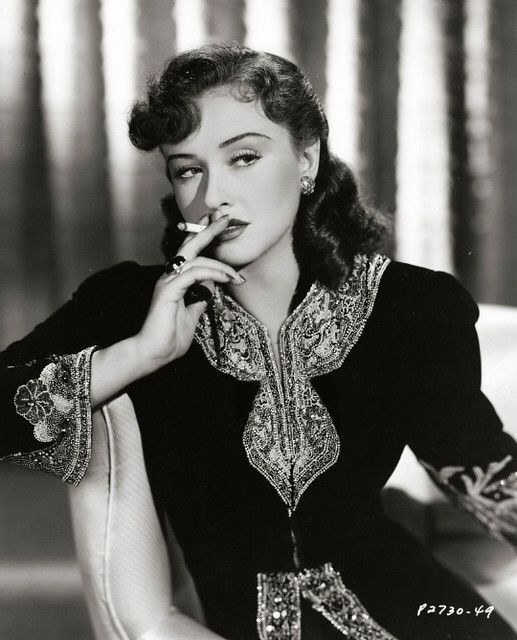
Marpessa Dawn:
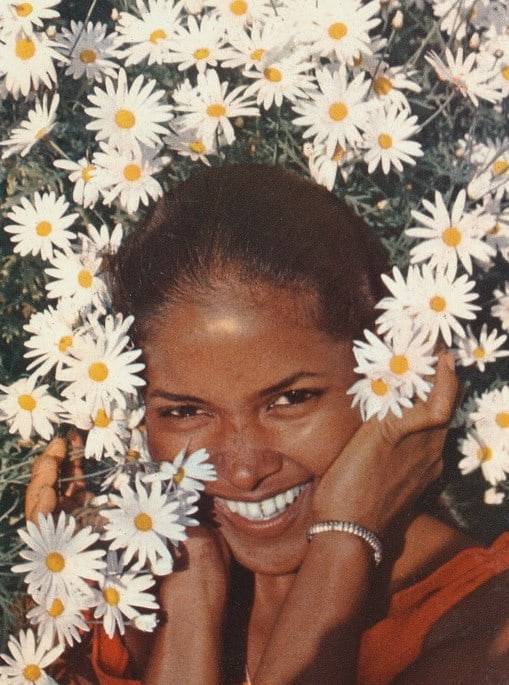
Marpessa Dawn was an filipina/african american who became well known as an actress, singer and dancer in France. She is most famous for her role in 'Black Orpheus' in which she played Eurydice. It's difficult to find a picture where she and her husband, the actor Eric Vander, aren't kissing or hugging or laughing together, they are incredibly cute (and hot).
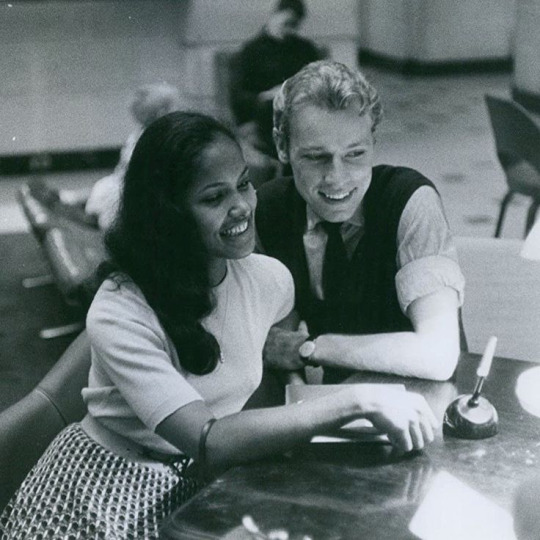
basically everyone and their mother will agree that marpessa dawn was one of THEE og vintage black women working in cinema (even if it was mostly in french cinema! the cross language barrier slay). mostly did her work in french cinema, and her smile in black orpheus is literally like the sun breaking over the sea


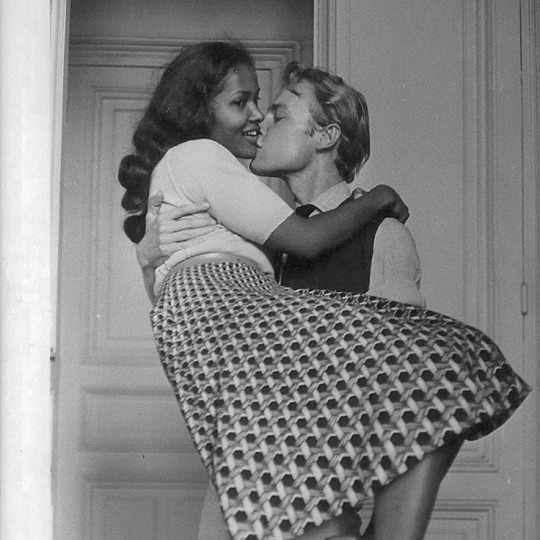
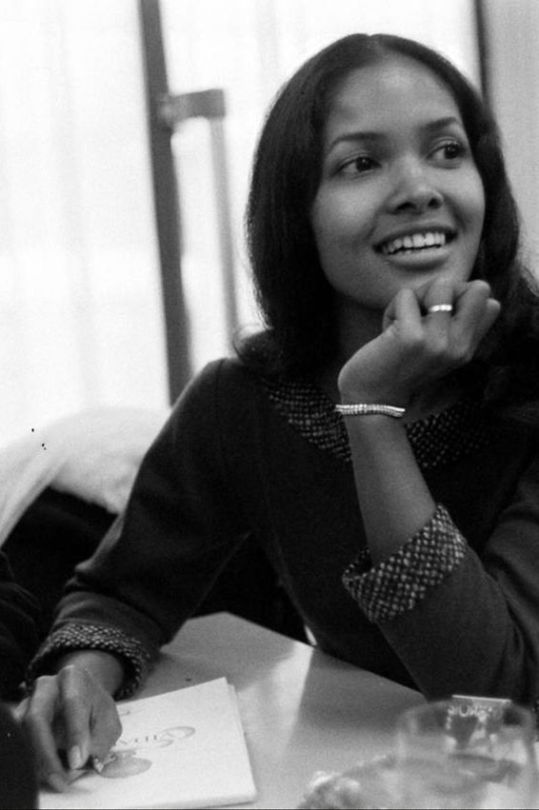
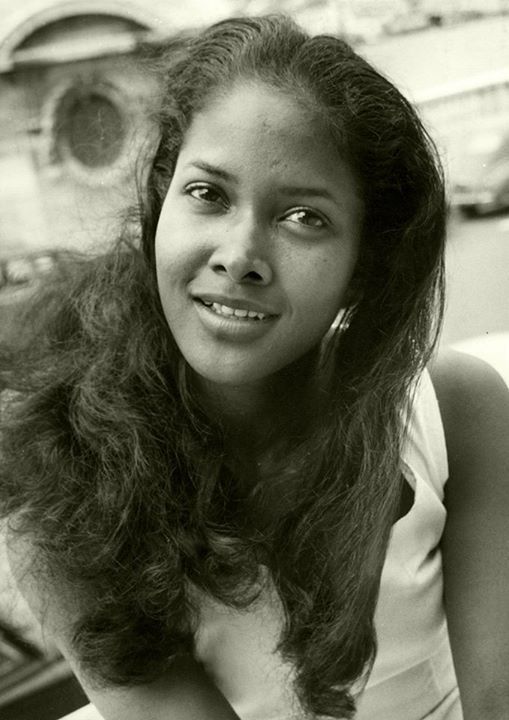
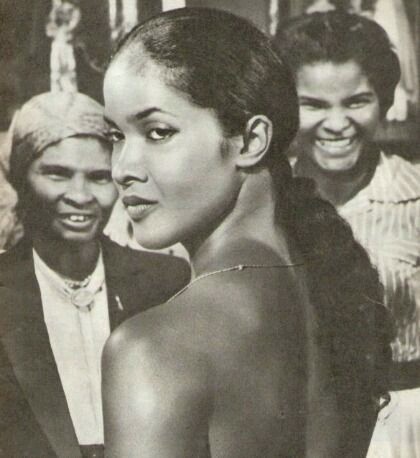
76 notes
·
View notes
Note
What is the ethnicity/nationality of everyone in ur AU?
I don't have concrete HC's for everyone, and a lot of them just have a general region/race rather than specific ethnicity, but i have some stuff for some characters! fine with it being up to interpretation too
most r born in alabama..cuz.... story takes place in alabama
Tim - white american, born in alabama Brian - white american, born in alabama Toby - white american, grandparents were german immigrants, born in colorado Kate - 3/4 chinese, 1/4 white american, born in alabama
Natalie - french american, born in louisiana - family has been in america for quite a few generations Jack - indian american, parents immigrated from india, born in north dakota Sally - half chilean, half white american, born in alabama BEN - white american, born in oregon
Jeff - white american, born in new jersey Liu - white/chinese american, born in new jersey Jane - black american, born in alabama Nina - mexican/black/filipina american, born in california
Ann - argentinian american, born in new york Lulu - vietnamese american, born in alabama Lazari - white american, born in alabama Dina - english/white american, born in alabama
ok basically theyre all born in america. damn. maybe i should change that HAHA
81 notes
·
View notes
Text
this is so random but i suddenly remembered @turtlethebean ’s headcanon of carmen being filipina-american, so as a filipina myself here are some headcanons about carmen being half-filipina:
- while her family would visit america from time to time, carmen actually studied and lived in the philippines up until high school, then she moved to america for college.
- in the philippines we’d have these major journalism competitions called press cons/press conferences, and they’d start from districts, divisions (cities), regions and finally nationals. carmen definitely competed in those kind of competitions as a photojournalist and as a tv broadcaster. she even ended up in the nationals once.
- she knows how to speak in bisaya (a filipino language)
- one of the reasons why she’s so impatient all the time is because of filipino time. (a negative filipino aspect where filipinos would arrive WAY later than the agreed time)
- she used to play chinese garter (a filipino game where you have to crosswire over a garter without touching it and the garter would get higher and higher) a lot as a kid, and she’s REALLY good at it.
- she likes to wear jackets even if the weather’s really hot.
- like most filipinos, she can actually sing a little, but she doesn’t like showing it. ever.
- one of the beauty standards here is straight hair, so there were always some peers that would tell carmen to straighten her hair. she would just promptly tell them to fuck off.
- she loves mangoes, especially with bagoong. (fermented fish/shrimp paste)
- one of her guilty pleasures is watching filipino dramas. she’d sometimes watch some even when she had already moved away from the philippines for fun.
#i honestly love this hc#there should’ve been filipino rep in cc#esp since it was popular with the filipinos during its release#the closest one was sofia i think (gabriel’s girlfriend in s5)#since she was apparently inspired by liza soberano#but sofia was italian i think?#criminal case#criminal case game#criminal case save the world
38 notes
·
View notes